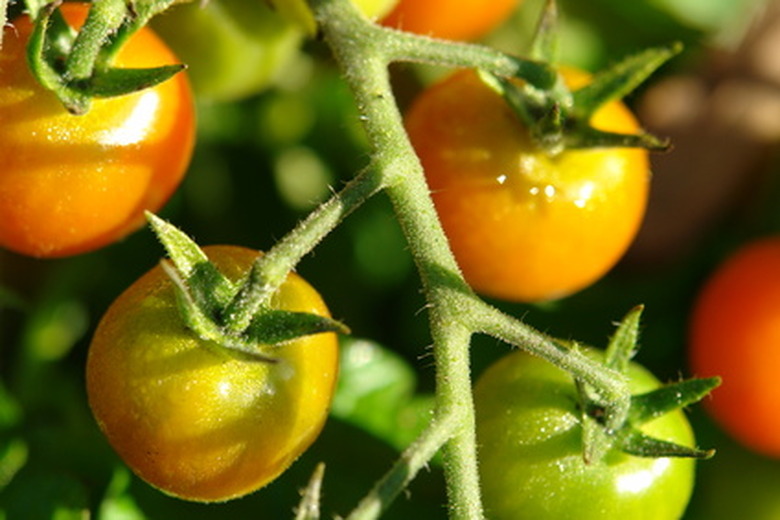How To Troubleshoot Tomato Blooms That Don't Produce Fruit
If your tomato plant has flowers that bloom but are not producing fruit, there is one thing that is probably causing it. Tomatoes have flowers with both male parts (stamens) and female parts (pistils). Unlike squash, which has separate male and female flowers, that means that the pollen has a very short way to travel in order to create fruit. Most of the time, gravity rather than bees does the job with tomatoes. If the weather is humid, the pollen may stick and not go where it should. Luckily, this is a problem that is easily remedied.
Step 1
Identify the stamen, pistil and pollen of any flower that is currently in bloom on your tomato plant. The stamens are the long fronds that stick out of the middle of the bloom. The pistil is the cup-like bottom of the bloom, above which the stamens rise. The yellow material on the ends of the stamens is pollen.
- If your tomato plant has flowers that bloom but are not producing fruit, there is one thing that is probably causing it.
- If the weather is humid, the pollen may stick and not go where it should.
Step 2
Swirl your dry paintbrush gently over the tops of the stamens. Try to gather as much pollen onto it as you can.
Step 3
Swab the pollen-coated paintbrush liberally in the pistil of the same flower. This will deposit some of the pollen where it needs to go.
Step 4
Repeat with any other open blooms you see on your tomato plant. It is OK if you cross-pollinate as well. The tomatoes will still be wonderful.
- Swirl your dry paintbrush gently over the tops of the stamens.
- Try to gather as much pollen onto it as you can.
Tip
Pollinating your tomatoes by hand may take some time and effort, but it is ultimately worth it. If you ever become involved with growing plants in a greenhouse, you will need to utilize this tactic even more frequently. Unlike tomatoes, many other plants require bees to pollinate them, which are absent in greenhouses. If you notice that other fruit-bearing plants in your garden are having a similar problem, this solution will work for them, too. It is advisable to use a separate paintbrush for each plant species, however. If you have planted several different varieties of tomato plants together, it is similarly advisable to use a separate paintbrush for each variety. You can reuse paintbrushes that you use for hand-pollinating. Simply wash them in water and allow them to air dry. Store with your other garden tools until the next time you need them.
Warning
Take special care if you or a neighbor have planted heirloom tomatoes. Chances are good that whoever is growing heirlooms is trying to preserve that particular variety and would not enjoy accidental cross-pollination.
